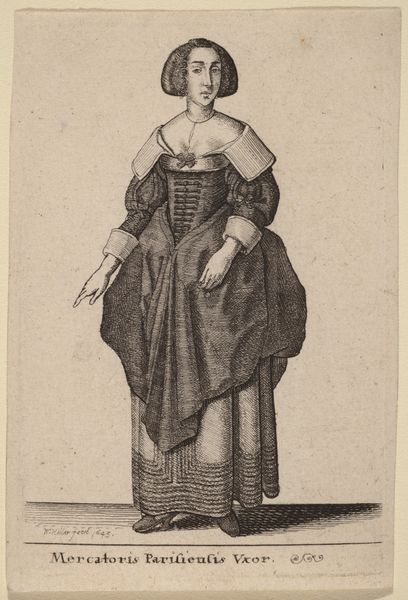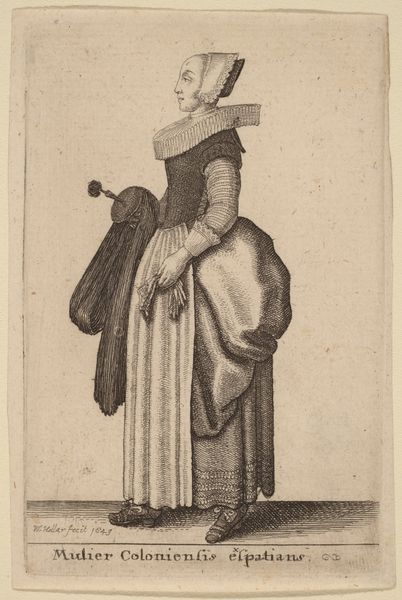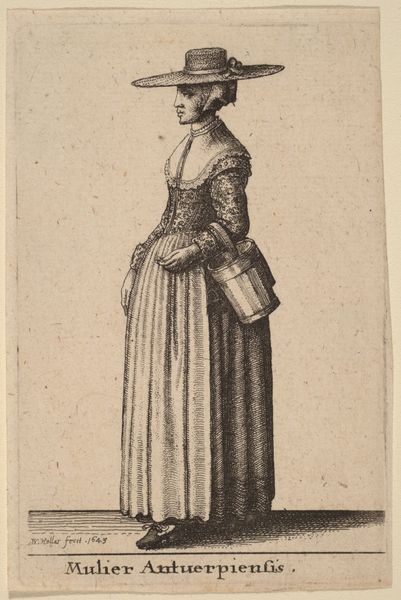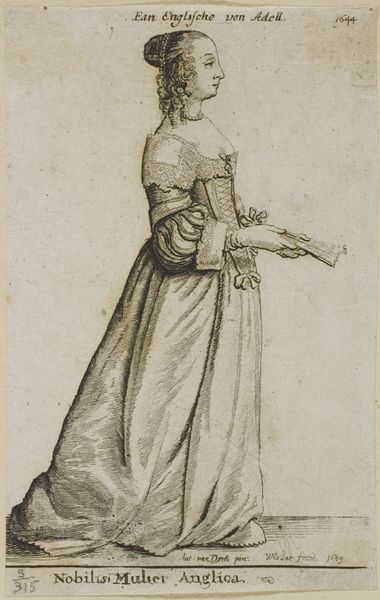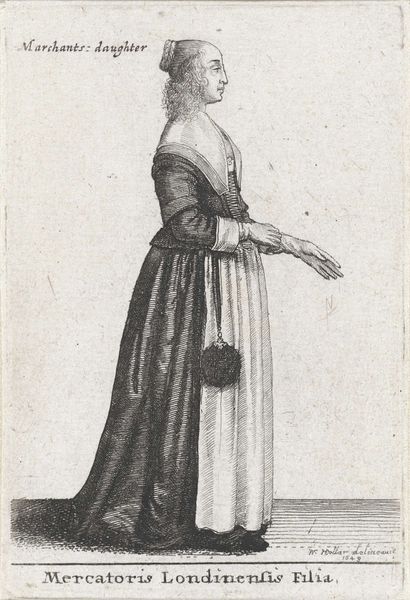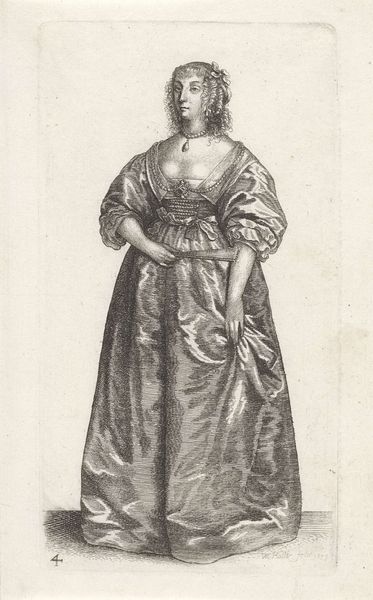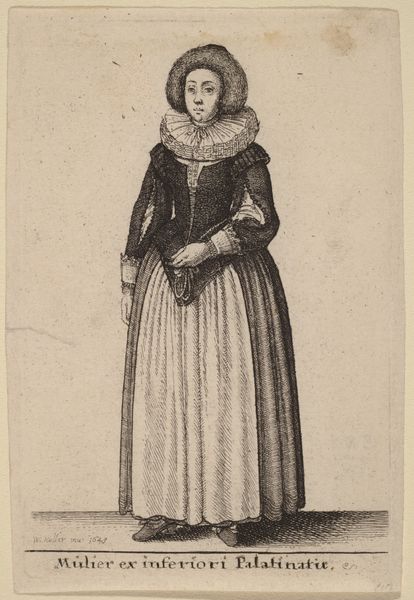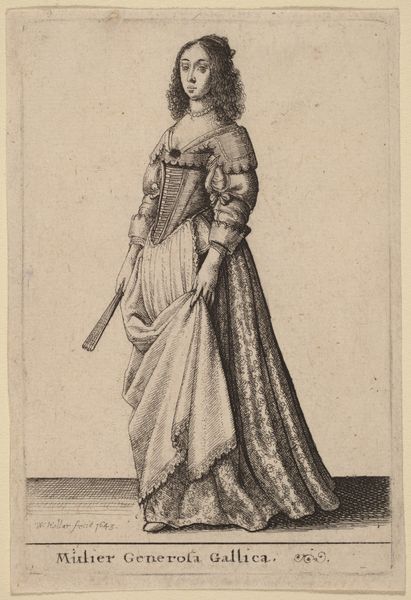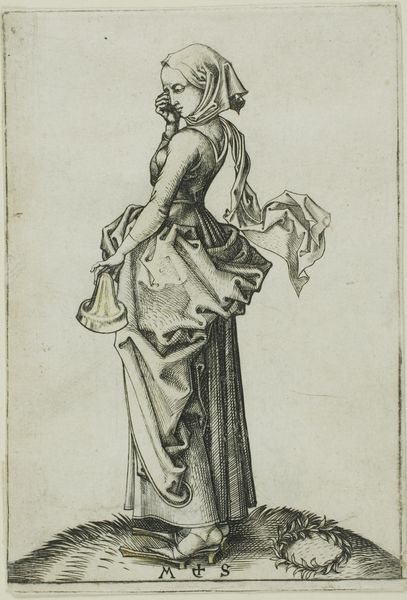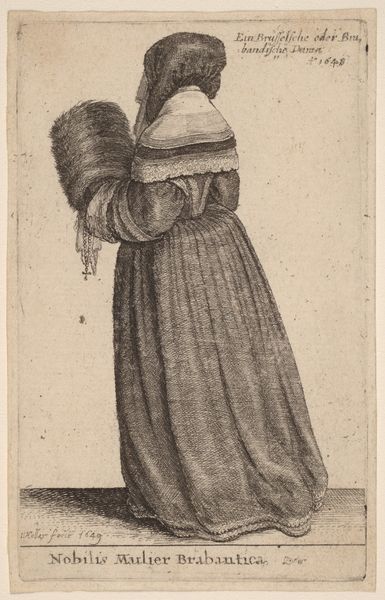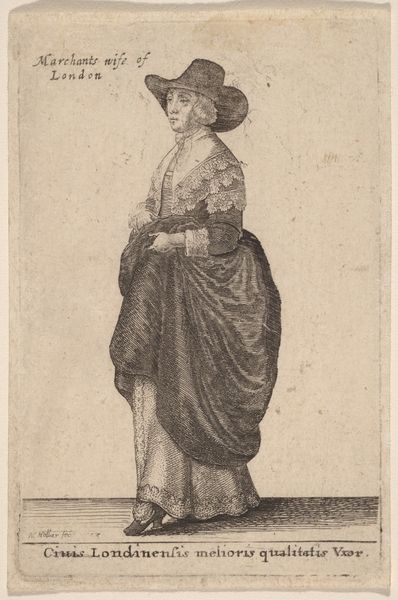
print, engraving
#
portrait
#
baroque
# print
#
genre-painting
#
history-painting
#
engraving
Copyright: National Gallery of Art: CC0 1.0
Editor: This is "Nobilis Mulier Aulica Anglicana" which translates to "Noble English Court Lady", an engraving by Wenceslaus Hollar, dating to 1643. It’s a beautifully detailed print, but it almost feels…clinical? The precision is striking, but what else do you see here? Curator: The engraving’s effectiveness lies precisely in its deployment of line. Observe how Hollar utilizes varying densities of cross-hatching to delineate form and texture. The interplay of light and shadow across the subject's dress creates a dynamic surface, almost obscuring the static pose itself. Editor: So, you’re saying the technical skill overrides any emotional content? Does the clothing signify social standing? Curator: Note the rendering of the lace collar and the silk of the gown. Each fold, each minute detail is meticulously transcribed. Semiotically, this excess represents not merely fashion but a deliberate articulation of status and wealth, rendered via highly skilled facture. Can we divorce form from function here? Editor: It’s hard to ignore how carefully those lines define her social status and beauty ideals, I suppose. So much attention is paid to how things appear. Curator: Precisely! The technical and formal choices—the very lines that constitute the image—become the language through which we understand not just the subject, but the societal values encoded within the artwork itself. Does this affect your understanding? Editor: Definitely. It’s made me reconsider how the details are vital because of what they represent, not just how they look as lines on a page. Curator: Indeed, appreciating this requires close looking and theoretical rigor.
Comments
No comments
Be the first to comment and join the conversation on the ultimate creative platform.
